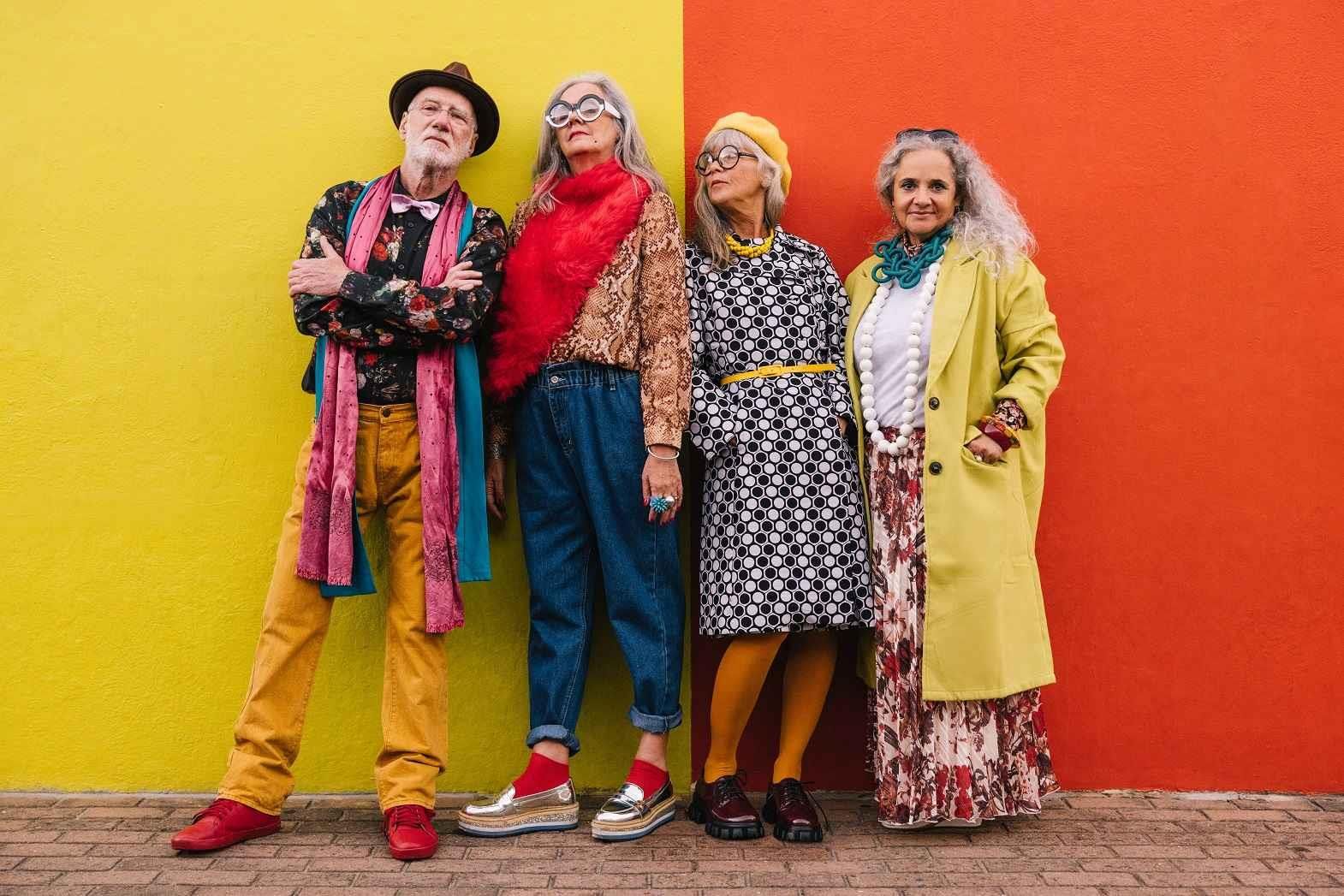The trick is to find something that does not restrict movement and is easy to take care of. The solution to choosing the right fashion is to understand the special needs of the elderly, who will be wearing them. It is important for the wearer to feel that the apparel maintains their independence and takes care of the personal needs too. The fashion for senior citizens involves style and comfort. With age, the overall physical stature shrinks and thus the garments designed for the elderly are to be designed that way. Most of the garments available in the market don't always fit the figure of the old citizens. These garments should make the wearer look modern and definitely not frumpy.
The designers often take care of minute details when they are designing for the elderly. Little buttons or snaps and small zippers are all difficult for some elderly to maneuver. A pull-on or wrap-around style of tops and pants are a much better option than the ones that involve zippers and buttons. For elderly women, front-closure bras may be significantly easier than having to twist arms in order to reach the back. Fleece pants are a nice way to keep the elderly a bit warmer. And, again, pockets in the front work better than pockets on the side. These styles are not difficult to find and are available in stores anywhere.
The fabrics that can be machine-washed and dried are a smart choice over the ones that are fragile and cannot stand rough handling or need special care such as hand washing. The softer fabrics that are unlikely to cause allergies and are good for sensitive skin must be given priority over rough fabrics. The elderly can layer up their daily wear clothing to ensure that they stay warm. A simple hooded jacket, drape of a scarf or a graceful cape can give a unique style and flair to the elderly. So wraps and shrugs that can be worn over tops and dresses to ward off a chill, a cotton jacket or a shirt that can be worn over a t-shirt are simple, comfortable and stylish for the senior citizens.
There are several manufacturers who have designed clothes to make personal care easier for the elderly. Side-zip pants with long, wide-tabbed zippers down both side, open back dresses and tops with large snaps or Velcro-type closures, pleats in the front of dresses and skirts to allow fabric to spread over the knees while seated have been specially designed bearing in mind the needs of the senior citizens. Velcro can replace buttons, zippers, snaps and laces. Some manufacturers are also selling backward shirts, which are comfortable.
In China, the government statistics show that the citizens above 65 years of age is set to grow from 0.88 million, or 12.6 percent, of the population, to 14 percent in 2016 and 27 percent in 2033. China's manufacturers have already started exploring the possibilities of earning huge profits in the fashion for senior citizen. China is the forefront of a huge customer base that may soon have the fashion industry falling over itself to offer service.
In Australia, according to the Australian Bureau of Statistics (ABS), people above over 45 years today represent 55 percent of spending in most categories. In the U.S.A. many of the nation's 75 million surviving baby boomers are beginning to enter the 65 plus age category. As this population become seniors, their tastes and needs are bringing great revenues to savvy apparel sellers who are learning how to cater to this market. Globally, China is leading the world in the market for senior citizens clothing.
The ageing population comprises of a good percentage of the total population in many developed countries in Europe, the U.S.A. as well as Japan. The elderly are a major market segment called 'silver market'. The elderly are supported by savings, social security benefits and pensions, and this gives them a strong spending power. A survey conducted by the Japanese government revealed that people who are 60 years old and above possess almost three times the financial assets of those in the young age group.
Today, the senior citizens are far more educated and aware than the previous generations. Having a basic wardrobe is essential for all the age groups, and the world of fashion is out there to address the needs of the elderly. The positive news is that more and more designers and retailers are starting to realize that sixty plus people are a powerful bunch and they are launching designs to ensure that the elderly can find comfort and style in designs. The most important thing is to pick a look that reinforces ones confidence, put it on, and then go out to win the world. Looking and feeling good is important for the elderly. Fashion is less about style or the designer label, or size and more about right attitude. With some good planning and the right wardrobe, seniors can continue to look good and feel comfortable regardless of the environment or circumstances.
References:
1. Seniors.lovetoknow.com
2. Blog.aarp.org
3. Entrepreneur.com
4. Hong-kong-economy-research.hktdc.com








Comments